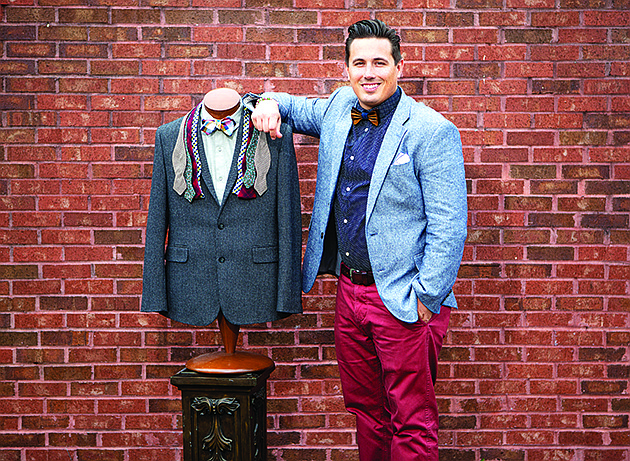Brent Kraus's story isn't as bright as the spunky bow ties he creates.
His company, Ella Bing, was created in memory of his brother, a mesmerizing young man known for his flashy bow ties. Matt Kraus committed suicide in 2010.
In 2012, Kraus and his mom decided to create a company that could help prevent others from going through the mourning that he and his family experienced. So Ella Bing donates 10% of sales to the Crisis Center of Tampa Bay, which provides suicide prevention and awareness.
“We didn't start this company just because,” says Brent Kraus. “We knew it would be right if we could help somebody somehow.”
Ella Bing's signature item is a wooden bow tie — hand carved from exotic wood. When Brent Kraus, 33, posted prototypes of the product on Instagram he says “people freaked out.” Adds Kraus: “It got to the point where we could post the product and within five minutes it would sell.”
But while the story behind the business is heartfelt, and the products, which include a line of fabric bowties, are well-received, Ella Bing is at a turning point: It's in its third year of business and covets the catapult for which many young businesses strive.
That's a place Sarasota entrepreneur Jonathan Boos knows well. Boos built his successful specialty men's accessory company, Würkin Stiffs, into a multimillion-dollar business. Boos says a lot of times the entrepreneur's grit determines whether the company will survive. When people question your specialty item, “You either fold or rise to the occasion,” he says.
The crossroads at Ella Bing can be seen around the family's kitchen table, where much of the work has been done at night. Along with their day jobs, Kraus and his parents often work 15 to 18 hours a day: His mom sews, his dad carves and Kraus builds a Web presence. The family recently partnered with an Oldsmar-based manufacturer, Victory Stitch, to start creating some of the fabric bow ties they sell.
Most of Ella Bing's business is online, with a few wholesale accounts at boutiques. After tripling sales to $50,000 in its second year, the company expects to double sales to at least six figures this year, Kraus says. Though the product is featured in 10 boutiques, mostly in Florida and some in Texas, customers have come from as far away as California and Australia.
Ella Bing's cloth bow ties sell for $45 each, and the wood bow ties for anywhere from $55 to $300 a piece. The company sells between 75 and 100 pieces a month, according to Kraus. Any other similar product on the market is mass-produced, but Ella Bing's wood bow ties are all handcrafted. “It is a wearable piece of art,” Kraus says. “The person who buys will be the only person to have that piece.”
But uniqueness, Kraus has learned, increases production costs. The least expensive wooden bow tie takes about an hour and a half of labor, the most expensive can take almost a full workday. Says Kraus: “With only one person making, you can only do so much.”

Break Out
Sarasota entrepreneur Jonathan Boos knows what it takes to build a successful specialty men's accessory company — the ultimate goal at Tampa-based Ella Bing. Boos' business, Würkin Stiffs, was built from an idea to make magnetic collar stays when he was late running to dinner. Now the 12-employee company is expected to earn $10 million in revenue within the next two years.
Here are some of Boos' tips on breaking into a tough industry:
Start small: Boos says if the goal is department stores, then start with boutiques. That's a great way to prove the concept and address issues. In his hunt for boutiques Boos realized many small independent stores belong to groups, so he found ways to meet with the group and network. “Specialty stores become your mutual fund,” Boos says. “You build with the specialty stores so you're ready for the majors.”
Check up: Once you get the department store, there's more work to do. Boos and his wife, for example, would play “secret shopper” in different department stores to see how salespeople worked with the target customer. When Boos got into Nordstrom's, he visited 88 stores, met the salespeople in person and introduced his product. “You have to rub skin,” he says. “It's a lot of sleepless nights, but then there's a tipping point when it all pays off.”
Don't quit: Tradeshows are a key component in the early going, but success requires persistence. The first year in a tradeshow, says Boos, a department store might not stop by your booth. But if they see you again and recognize you six months later, they'll be more interested. They'll want to know the metrics, says Boos. That includes the number of stores you're in, online sales, what you're doing for social media and PR and if you've been in any magazines.







